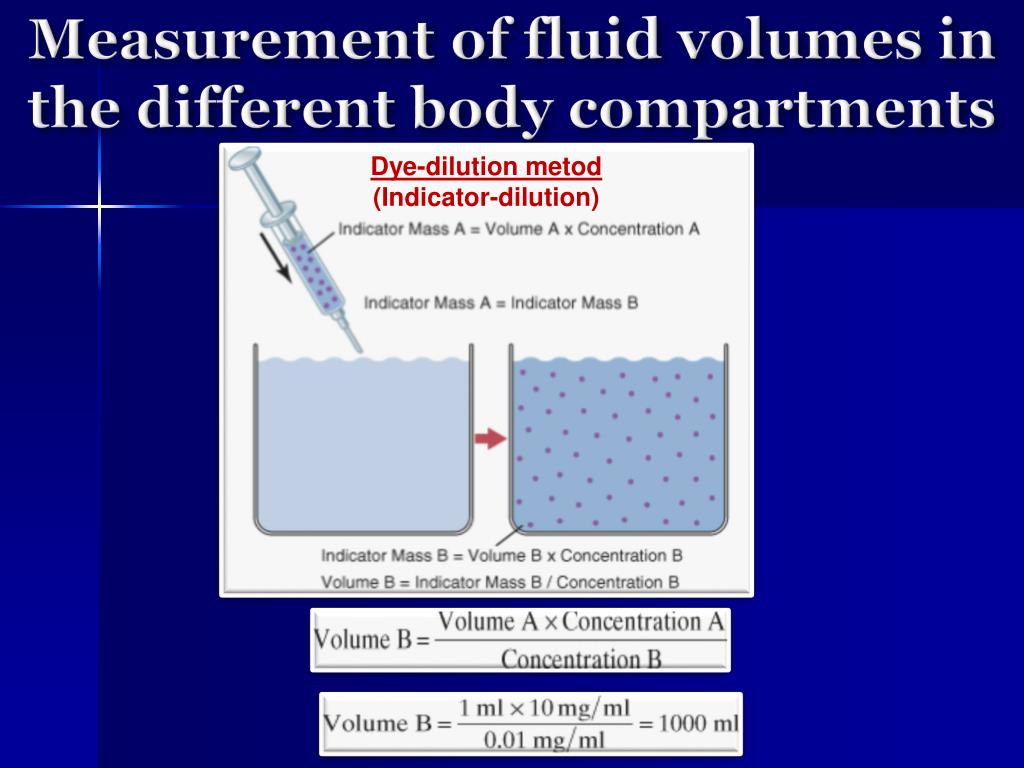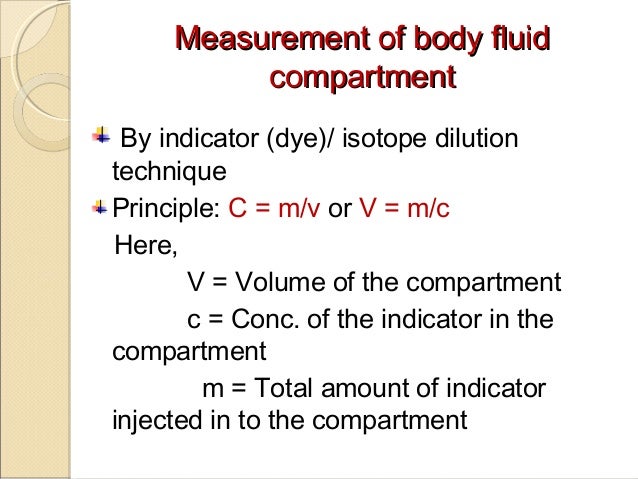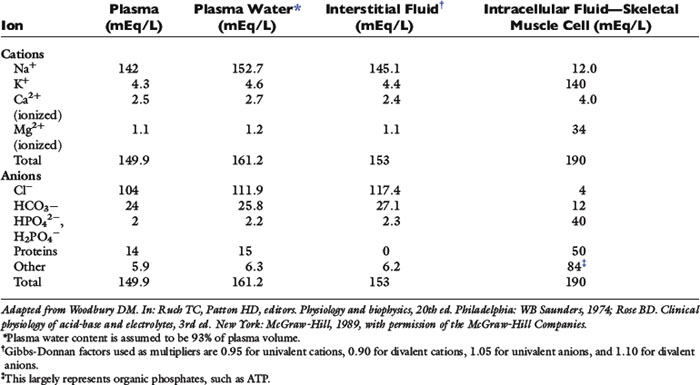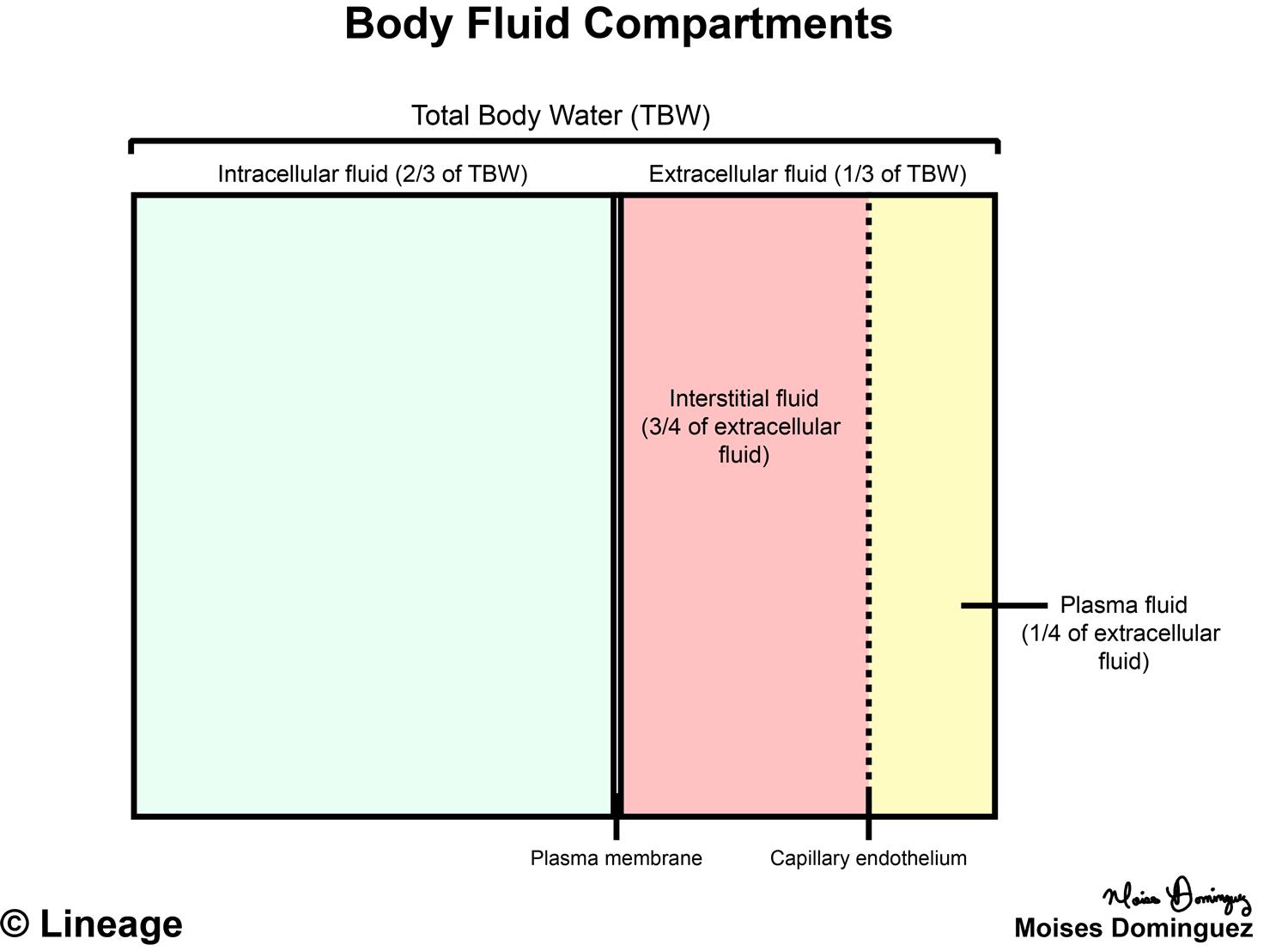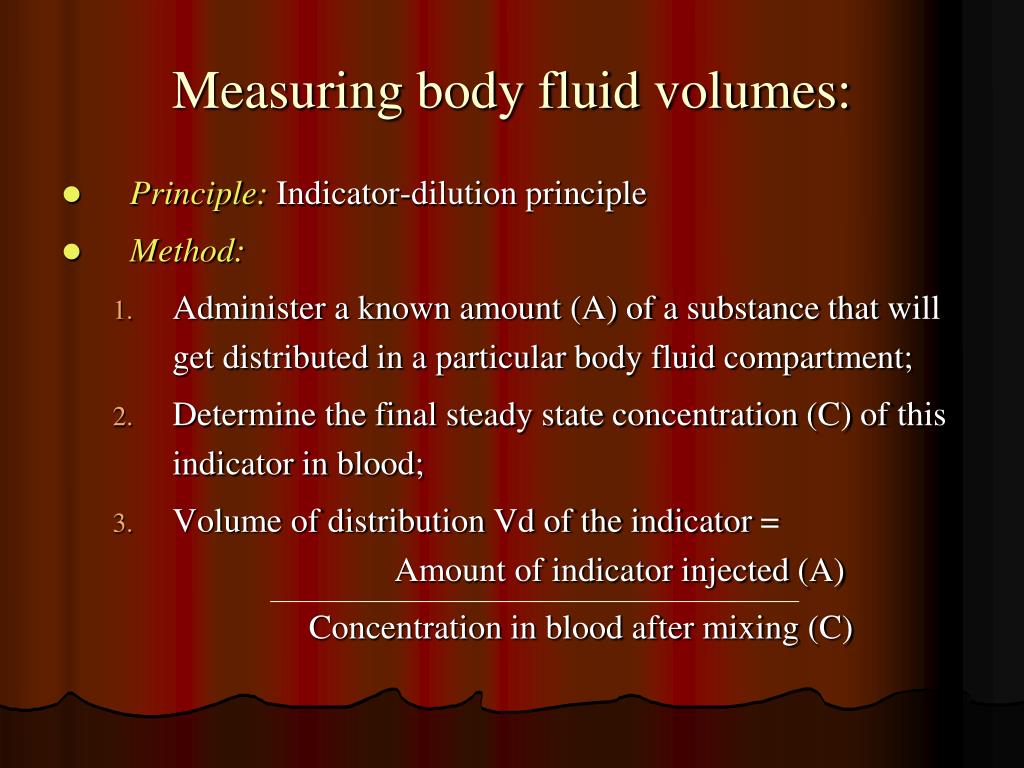Average 70 kg adult human 42 liters 60 of total body weight icf contains 28l ecf contains 14 l. Not interfere with body fluid distribution if the tracer is excreted in the urine then the loss can be determined and corrections made in the calculation.

Lecture 5 A Body Fluids Pathophysiology A Lymphoedema
Measurement of body fluid compartments. The volume of a fluid compartment in the body can be measured by placing an indicator substance in the compartment allowing it to disperse evenly through out the compartments fluid and then analyzing the extent to which the substance becomes diluted. A known amount of a substance the indicator which should be confined to the compartment of interest is administered. Composition of fluid intra and extracellular. Body fluid compartments and measurement general physiology duration. If you measure too soon all you will get is the volume of the functional extracellular fluid. Measurement of fluid volumes in the different body fluid compartmentsthe indicator dilution principle.
Physiology open 1205 views. Total body water. How to measure the fluid volume intra and extra cellular total body water constitutes in men about 60 of body weight in women 50 is divided into icf and ecf. Measuring the extracellular fluid volume with crystalloid tracer. Determination of cardiac output ficks principle dye dilution method to assess. Unfortunately some bromine 82 also distributes into the cells.
The volume of the plasma is around 3 litres in an average person but the average blood volume is 4 6 litres. If the tracer is metabolised a series of measurements can be made and assuming exponential decline first order kinetics the volume of distribution can be determined by extrapolation back to zero time. After allowing sufficient time for uniform distribution of the indicator throughout the compartment a plasma sample is collected. The intracellular fluid icf compartment is the system that includes all fluid enclosed in cells by their plasma membranes. Interstitial fluid is 11 litres. Body fluids can be discussed in terms of their specific fluid compartment a location that is largely separate from another compartment by some form of a physical barrier.
The body fluid compartments in the body can be divided into. Ecf is further divided into interstitial extravascular and bloodplasma intravascular compartments. The human body and even its individual body fluids may be conceptually divided into various fluid compartments which although not literally anatomic compartments do represent a real division in terms of how portions of the bodys water solutes and suspended elements are segregated. The indicator dilution method can be used to determine the size of body fluid compartments see chapter 14. Describe the body fluid compartments and explain the methods used for measurement of body fluid volumes. Thus bromine measurements of the ecf volume frequently over estimate the ecf volume.
The two main fluid compartments are the intracellular and extracellular compartments. Plasma is 3 litres.




